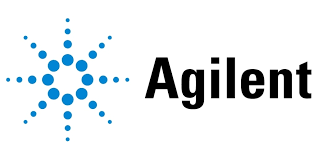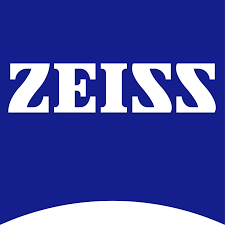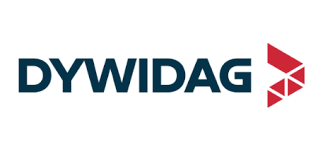Catalysts For Green Chemistry
Published Date: 25 August 2025 | Report Code: catalysts-for-green-chemistry
Catalysts For Green Chemistry Market Size, Share, Industry Trends and Forecast to 2033
This report examines the Catalysts For Green Chemistry market for the period 2024 to 2033, providing key insights into market size, growth drivers, technology advancements, and regional trends. It delivers in‐depth analysis and comprehensive data on market dynamics, industry segmentation, and future forecasts, offering valuable intelligence for investors and industry stakeholders alike.
| Metric | Value |
|---|---|
| Study Period | 2024 - 2033 |
| 2024 Market Size | $3.80 Billion |
| CAGR (2024-2033) | 6.2% |
| 2033 Market Size | $6.62 Billion |
| Top Companies | GreenChem Innovations, EcoCatalyst Solutions |
| Last Modified Date | 25 August 2025 |
Catalysts For Green Chemistry (2024 - 2033)
Catalysts For Green Chemistry Market Overview
Customize Catalysts For Green Chemistry market research report
- ✔ Get in-depth analysis of Catalysts For Green Chemistry market size, growth, and forecasts.
- ✔ Understand Catalysts For Green Chemistry's regional dynamics and industry-specific trends.
- ✔ Identify potential applications, end-user demand, and growth segments in Catalysts For Green Chemistry
What is the Market Size & CAGR of Catalysts For Green Chemistry market in 2024?
Catalysts For Green Chemistry Industry Analysis
Catalysts For Green Chemistry Market Segmentation and Scope
Tell us your focus area and get a customized research report.
Catalysts For Green Chemistry Market Analysis Report by Region
Europe Catalysts For Green Chemistry:
Europe demonstrates significant market maturity and strong regulatory frameworks supporting green chemistry initiatives. With a market size of approximately 1.38 billion in 2024, growing to an expected 2.40 billion by 2033, European countries are investing heavily in clean technologies and sustainable practices. The emphasis on reducing carbon footprints and enhancing economic sustainability through technological advancements has positioned Europe as a leader in the adoption of green catalysts.Asia Pacific Catalysts For Green Chemistry:
In the Asia Pacific region, the market is marked by rapid industrial expansion and increasing emphasis on sustainable manufacturing practices. In 2024, the market size stood at approximately 0.66 billion, progressing to an estimated 1.16 billion by 2033. Investment in green technologies and supportive government policies are key drivers, with significant growth expected in countries such as China, India, and Japan where environmental regulations and industrial modernization are rapidly evolving.North America Catalysts For Green Chemistry:
North America remains a robust market for green catalysts, with the market size growing from 1.24 billion in 2024 to an estimated 2.15 billion by 2033. The region benefits from advanced technological infrastructure, high R&D spending, and stringent environmental regulations. The United States and Canada, in particular, are at the forefront of implementing innovative green chemistry solutions, fostering a competitive environment that supports continuous innovation and market expansion.South America Catalysts For Green Chemistry:
The South American region, though smaller in scale, is witnessing steady growth due to increasing environmental awareness and governmental initiatives aimed at promoting sustainable practices. The market size in this region shows a gradual yet promising rise from 0.11 billion in 2024 to around 0.19 billion in 2033. Collaborative efforts between public and private sectors are enhancing research and development activities, further driving market demand and adoption.Middle East & Africa Catalysts For Green Chemistry:
The Middle East and Africa region is gradually emerging in the green chemistry market, with a market size forecast to grow from 0.41 billion in 2024 to around 0.72 billion by 2033. Although this region faces distinct challenges such as fluctuating economic conditions and infrastructural constraints, increased environmental awareness and strategic investments in renewable energy and sustainable technologies are paving the way for market growth.Tell us your focus area and get a customized research report.
Catalysts For Green Chemistry Market Analysis By Catalyst Type
Global Catalysts for Green Chemistry Market, By Catalyst Type Market Analysis (2024 - 2033)
The analysis by catalyst type delves into three primary segments: homogeneous catalysts, heterogeneous catalysts, and biocatalysts. Homogeneous catalysts have the largest market share, accounting for approximately 68.68% of the total market, due to their high efficiency and ease of integration in reaction systems. Heterogeneous catalysts, with a slightly smaller segment share of 27.41%, are favored for their operational stability and reusability across multiple reaction cycles. Biocatalysts, though representing a smaller fraction at around 3.91%, are increasingly gaining traction as industries adopt more environmentally friendly and energy-efficient processes. This segmentation is critical in understanding the operational dynamics and strategic focus areas for key market players, enabling more informed decisions regarding R&D investments and product development.
Catalysts For Green Chemistry Market Analysis By Application
Global Catalysts for Green Chemistry Market, By Application Market Analysis (2024 - 2033)
The application segment of the green chemistry catalysts market spans several key industries including the chemical, energy, food and beverage, pharmaceuticals, agriculture, polymers, and fuels sectors. In 2024, the chemical industry dominated this segment with a market size of 2.61 billion and a share of 68.68%, reflecting its dependency on catalytic processes for high-volume production and efficiency improvements. The energy sector, with a market size of 1.04 billion and a share of 27.41%, is witnessing a surge as renewable energy and clean processes become more prominent. Smaller segments like food and beverage show a market size of 0.15 billion and a share of 3.91%, while the pharmaceutical industry remains significant with a market size of 2.09 billion and a commanding share of 54.93%. The agriculture, polymers, and fuels segments, though relatively smaller, contribute to the overall diversity and resilience of the market, ensuring that innovations in catalyst technology address a wide spectrum of industrial needs.
Catalysts For Green Chemistry Market Analysis By Industry
Global Catalysts for Green Chemistry Market, By Industry Market Analysis (2024 - 2033)
Industry-specific analysis reveals that the utilization of green catalysts is predominantly driven by sectors with high production volumes and stringent regulatory demands. The chemical and pharmaceutical industries are the frontrunners, with the chemical industry leading in size and volume due to its comprehensive adoption of green technologies and efficient process systems. Similarly, the pharmaceutical sector not only benefits from improved process efficiencies but also from enhanced product quality and compliance with environmental standards. Moreover, industries such as energy, agriculture, polymers, and fuels have also integrated green catalysts into their production lines to meet sustainability goals and reduce operational costs. This industry-centric segmentation is vital for stakeholders, as it highlights where the demand for innovative catalyst solutions is most robust and where future market investments are likely to yield the highest returns.
Catalysts For Green Chemistry Market Analysis By Functional Application
Global Catalysts for Green Chemistry Market, By Functional Application Market Analysis (2024 - 2033)
The functional application analysis categorizes catalysts based on their roles in various chemical processes, specifically oxidation, reduction, and isomerization. Oxidation processes lead the way with a sizable market segment, holding a share of 68.68% and a market size that mirrors that of homogeneous catalysts. Reduction processes follow with a stable share of 27.41%, underscoring their importance in various manufacturing operations. Isomerization processes, although representing a smaller portion at 3.91%, are gaining interest as companies focus on optimizing product yields and minimizing energy consumption. These functional application segments illustrate how different types of catalytic processes contribute to overall market efficiency and sustainability, offering valuable insights into the technical advancements that are set to shape future industrial practices.
Catalysts For Green Chemistry Market Trends and Future Forecast
Tell us your focus area and get a customized research report.
Global Market Leaders and Top Companies in Catalysts For Green Chemistry Industry
GreenChem Innovations:
GreenChem Innovations is a leading player in the green chemistry sector, specializing in advanced catalyst technologies that enhance efficiency and sustainability. With a strong focus on R&D and innovation, the company has pioneered several solutions that reduce environmental impact while boosting process productivity.EcoCatalyst Solutions:
EcoCatalyst Solutions is renowned for its cutting-edge catalytic systems that address diverse industrial needs. The company’s commitment to sustainability and technological excellence has positioned it as a key market leader, driving advancements in eco-friendly and cost-effective catalyst applications across multiple sectors.We're grateful to work with incredible clients.









FAQs
What is the market size of Catalysts for Green Chemistry?
The Catalysts for Green Chemistry market is projected to reach $3.8 billion by 2033, growing at a CAGR of 6.2%. This growth can be attributed to the increasing demand for sustainable chemical processes.
What are the key market players or companies in the Catalysts for Green Chemistry industry?
Key players in the Catalysts for Green Chemistry industry include large companies such as BASF, Johnson Matthey, and Haldor Topsøe, which lead the market with innovative solutions and technologies enhancing green chemistry practices.
What are the primary factors driving the growth in the Catalysts for Green Chemistry industry?
The growth in the Catalysts for Green Chemistry industry is driven by regulatory mandates for sustainable practices, increased consumer awareness towards environmentally-friendly products, and technological advancements facilitating the development of efficient catalysts.
Which region is the fastest Growing in the Catalysts for Green Chemistry?
Europe is the fastest-growing region in the Catalysts for Green Chemistry market, expected to grow from $1.38 billion in 2024 to $2.40 billion in 2033, showcasing strong initiatives towards sustainable chemistry.
Does ConsaInsights provide customized market report data for the Catalysts for Green Chemistry industry?
Yes, ConsaInsights offers customized market report data tailored to specific needs in the Catalysts for Green Chemistry industry, ensuring detailed insights based on client's focus areas and market dynamics.
What deliverables can I expect from this Catalysts for Green Chemistry market research project?
From the Catalysts for Green Chemistry market research project, expect comprehensive reports, SWOT analyses, market forecasts, and segmented data, providing actionable insights for informed decision-making.
What are the market trends of Catalysts for Green Chemistry?
Current trends in the Catalysts for Green Chemistry market include an increasing focus on biocatalysts, rising investments in sustainable technologies, and a shift towards optimizing chemical processes to reduce environmental impact.
